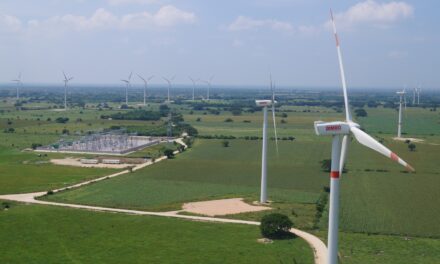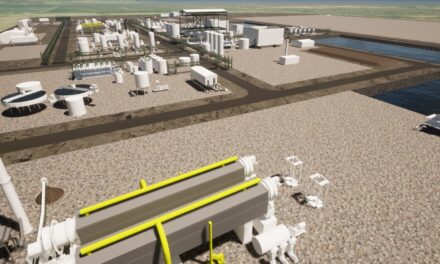Overlooked No Longer |

The Port of Wilmington, North Carolina, was the site chosen for the EPA’s launch of its $3 billion Clean Ports Program in late February.
Photo courtesy of North Carolina Ports
A trio of federal program announcements during Q1 2024 unleash funds, people and resources intended to enhance the economic development, health and vitality of under-resourced and overstressed communities and sites.
In early February, the International Economic Development Council, through a $30 million partnership agreement with the U.S. Economic Development Administration (EDA) authorized under the CARES Act, introduced the inaugural cohort of the Economic Recovery Corps (ERC), which will dispatch 65 ERC Fellows to locations across the country for the next two-and-a-half years to “spearhead catalytic projects that advance new ways of doing economic development to build more resilient, inclusive and equitable economies.”
Each Fellow receives a $90,000 annual fellowship stipend for 2.5 years ($225,000 total) and a $10,000 post-fellowship readjustment stipend contingent upon fulfillment of contractual requirements and completion of program.
The 65 projects are located across 44 states and break down as 62% rural, 23% mixed (urban, suburban, and rural), and 15% urban. Employers studying communities for location opportunities that blend community support with company strategy can learn more about each project here. They include such endeavors as elevating a new innovation district launched one year ago in Portsmouth, Ohio, by the Kricker Innovation Hub at Shawnee State University; scaling small business and microenterprise lending in Puerto Rico; breaking down barriers to economic success in such areas as affordable housing, child care and transit in Wichita, Kansas; and redeveloping brownfield sites in northwestern Indiana’s “Quantum Computing Fiber Corridor.”
A level of contamination well beyond “brownfield” characterizes Superfund sites. In late February, the U.S. Environmental Protection Agency, thanks to funding from the Bipartisan Infrastructure Law, announced “a third and final wave” of more than $1 billion for new cleanup projects at 25 Superfund sites and continuing cleanup at over 85 Superfund sites across the country. In total, the three waves are directing $3.5 billion toward Superfund cleanups. Among the new cleanups listed in the announcement:
“At the East HelenaSuperfund site in East Helena, Montana, funds will advance critical cleanup of soil and groundwater contamination caused by more than a century of smelting lead, zinc, and other metals at the former ASARCO facility.”
“At the US Finishing/Cone Mills Superfund site in Greenville, South Carolina, funds will support the completion of cleanup work at the site by treating contaminated groundwater, paving the way for the site’s return to productive use as mixed-use development (commercial and residential) through a unique public-private partnership with the state of South Carolina and landowners.”
At the Standard Chlorine of Delaware Inc. Superfund site in New Castle, Delaware, funds will go toward excavation and treatment of wetland soils and sediment contaminated through historical industrial activities and spills outside of the former chemical manufacturing plant.
Visit this web page for a full list of cleanup activities already moving forward at Superfund sites. This page highlights the 25 new cleanup projects backed by the new tranche of funding.
Last but certainly not least comes a $3 billion investment announced in Wilmington, North Carolina, one day after the Superfund news to launch the EPA’s Clean Ports Program to fund zero-emission port equipment and infrastructure. Advancing initiatives that many ports already had begun years ago, the program features a $2.8 billion Zero-Emission Technology Deployment Competition that will directly fund zero-emission port equipment and infrastructure to reduce mobile source emissions at U.S. ports. The approximately $150 million Climate and Air Quality Planning Competition will fund activities at U.S. ports including emissions inventories, strategy analysis, community engagement and resiliency measure identification.
“Communities living near America’s ports have borne the brunt of some of the worst air pollution coming from shipping, trucking, and maritime industries,” said Senior Advisor to the President for International Climate Policy John Podesta.
The EPA said the new program builds on the success of its Ports Initiative and the Diesel Emissions Reduction Act programs, “which have invested over $196 million to implement 207 diesel emissions reduction projects at ports with an additional $88 million to multi-sector projects that involve ports.”







